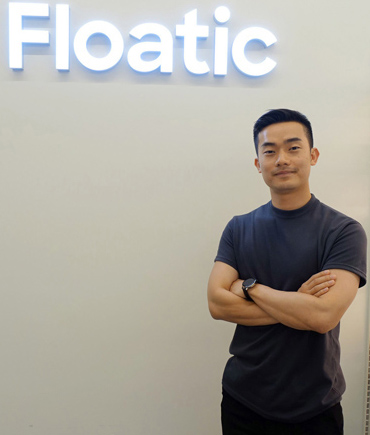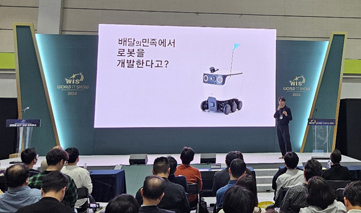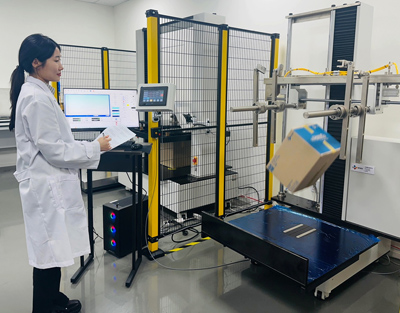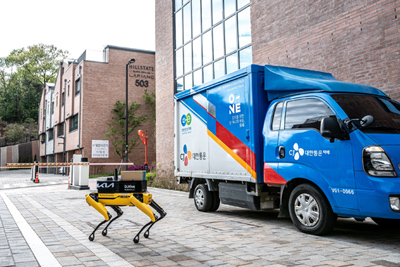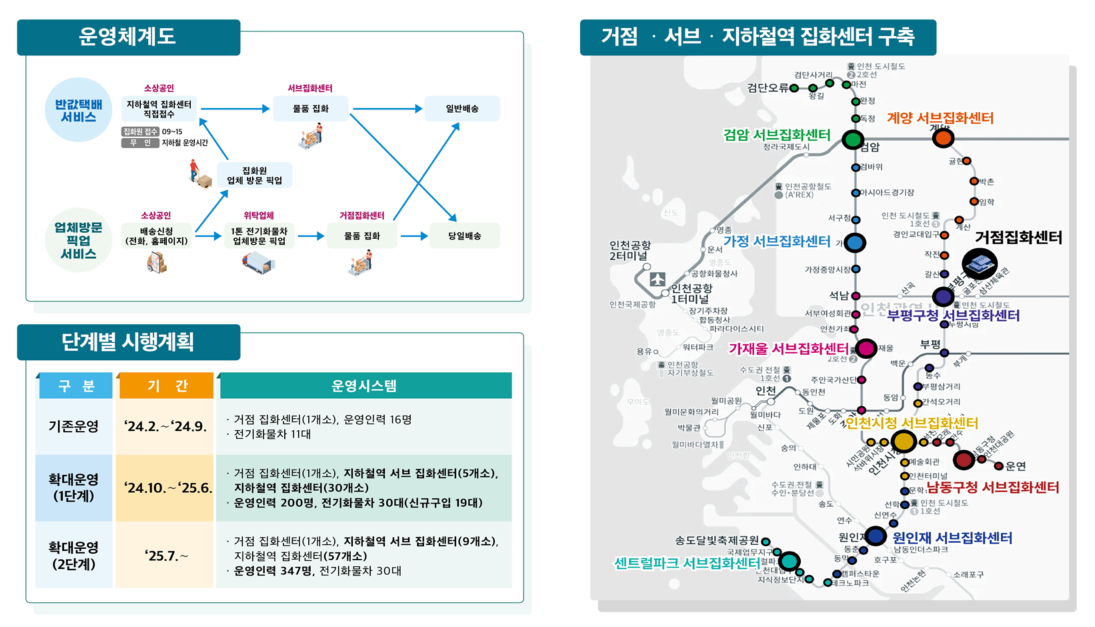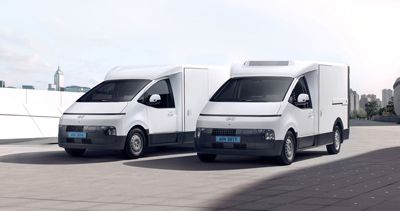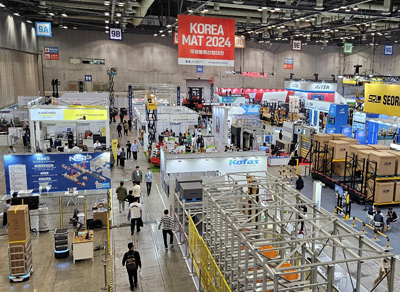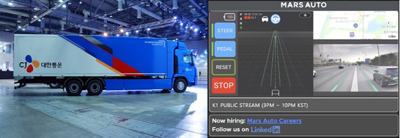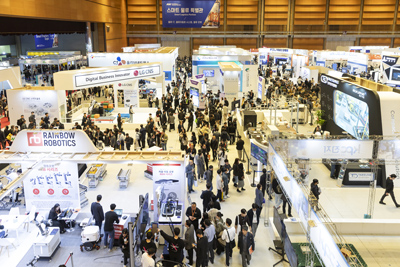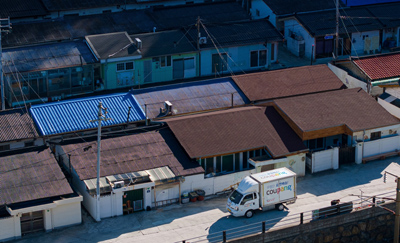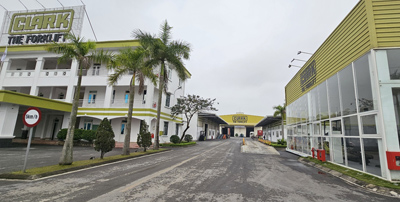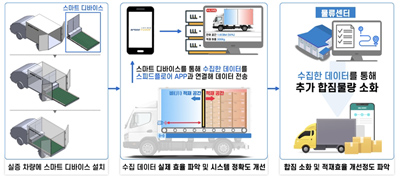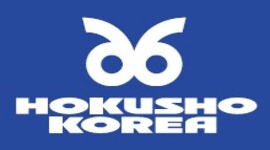| HAI ROBOTICS / 'ACR-based High Pick System' Inventory Storage - Maximizing Shipping Efficiency | |



|
|
|
|
|
|
'ACR-based High Pick System' Inventory Storage - Maximizing Shipping Efficiency Customized production at customer logistics sites - Fast after-sales service strengths 2024/04 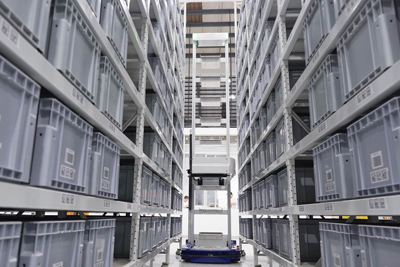 HAI ROBOTICS, a provider of Autonomous Case-handling Robot (ACR)-based logistics automation equipment, is expanding its domestic references beyond logistics to include manufacturing and smart farms. In just two years since establishing its Korean office in 2022, the company has already installed or is preparing to install 12 domestic sites with HAI Robotics solutions. Sales Representative Choi Chan-ho Pro cites the advantages of HAI ROBOTICS as a diverse product lineup and customization to the customer's logistics site. “We first identify the needs of our customers and supply optimized equipment in consideration of the characteristics of the products handled, the volume of goods, and the logistics environment,” said Choi. ”Our customers are very satisfied because we have a wide range of ACR products and customize them for each customer at our Wuxi, China factory.” Headquartered in Shenzhen, China, HAI ROBOTICS was founded in 2015 and began investing in ACR R&D in 2017, launching the A42 standard model in 2019, which is the basic ACR model. In 2020, the company expanded its lineup in earnest, and in 2021, it established overseas offices in Japan and the Netherlands for overseas business. Currently, the company has partnered with more than 60 local companies through overseas offices located in Europe, the United States, Northeast and Southeast Asia, and has completed more than 1,300 projects in more than 30 countries. The company expects the Korean market to have high growth potential due to its high understanding of and demand for logistics automation equipment. The company has two factories, Dongguan for domestic production and Wuxi for global production, with a production capacity of 10,000 units per year. In particular, HAI ROBOTICS has obtained more than 1,500 patents worldwide for core technologies such as navigation, control, vision, storage, and systems. Diverse ACR lineup 'can be mixed and matched'  The ACR is a GTP-based robotic system in which a high-pick robot with up to eight stages removes boxes from a rack and transfers them to an operator. ACR is available in the following models: ▲ Multi-stage stacking type A42 ▲ Double dip type A42D ▲ Carton picking type A42N ▲ Telescopic lift type A42T ▲ Slam type A42SLAM ▲ Width adjustable type A42-FW ▲ Fork lifting type A3 ▲ SMT-only fork lifting type A3S. The high-pick robot can climb up to 5 meters and can transport up to nine boxes at a time with eight levels of stacking and forks. The double-dip robot stacks boxes in two rows to improve storage efficiency. By analyzing order data, the robot optimizes inventory placement by storing less frequently shipped products at the back of the top and more frequently shipped products at the front of the bottom, minimizing the time it takes for the robot to retrieve products. In addition, when the robot picks up the items in the back, the items in the front are stored in the robot tray for a while and then put back after the robot finishes picking the items. The telescopic lift type is a robot designed with forks that can rise up to 10 meters, and is most in demand because it can be used on high racks. If paper cartons are used instead of totes, the carton picking type A42N is used. It is equipped with a 3D camera to recognize both totes and cartons. In addition, the A42-FW is available with adjustable fork width for handling cartons of various sizes. The A3 series is a forklift that lifts and moves goods using a fork lifting method, so it is often used to transport deformed goods such as tires or goods with heavy loads. Therefore, it is applied to manufacturing sites rather than logistics. In particular, the A3S is suitable for quickly transferring products one by one from line to line in semiconductor lines. The tote box sizes supplied by HAI ROBOTICS range from 600(L)×400(W)×300(H) mm to 800(L)×800(W)×450(H) mm, and up to 16 SKUs can be stored in one tote box. The rack can also be used with existing racks if they are corded. This is the basic ACR lineup, but HAI ROBOTICS offers a combination of features depending on the customer's needs. “If a customer wants high storage efficiency while handling paper boxes, double dip, telescopic lift, and carton picking types can be applied to the Hi-Pick robot,” said Choi. ”Being able to customize it according to the customer's logistics environment is the biggest competitive advantage of HAI ROBOTICS.” Supply of logistics automation equipment 'High Pick System' Based on ACR, HAI ROBOTICS also supports the Hi-Pick System, which is an overall logistics automation facility from receiving goods to inventory storage and picking, including racks for storing goods, AMRs for transporting individual boxes, and workstations for picking by workers. In the high-pick system, customers can choose how the high-pick robot moves to the workstation after picking boxes, i.e., the high-pick robot with up to eight tiers can move directly to the workstation, or the high-pick robot can pick only rack-loaded boxes while the AMR transports individual boxes to the workstation. You can also choose to have human picking at the workstation. The AMR lifts the boxes to the workstation and the operator picks the goods directly, the ACR places the boxes on a conveyor connected to the workstation, the ACR places the boxes on a shelf at the workstation, or the ACR places up to eight boxes at a time in a HAIPORT. The HAIPORT is a facility that can unload boxes from ACR trays at once to support faster shipping operations, reducing the time it takes for the ACR to unload boxes from workstations one by one. The Hi-Port can process up to 900 boxes per hour. Hi-Pick System 3 improves storage efficiency and picking speed  HAI ROBOTICS recently introduced the HiPick System 3 with the HiPick A42T-E2, a telescopic grapple hook ACR. The main difference is that the A42T-E2, equipped with ChainPick technology, pulls the tote box out with a hook rather than a fork. The pulling hook with a picking speed of 2.7 seconds quickly pulls out the tote boxes one after the other, reducing the space required for forks, and the ChainPick technology allows up to five rows of boxes to be installed, maximizing inventory storage efficiency with ultra-high density storage. “The A42T-E2 can only be used with tote boxes because it is hung by hooks,” explains Choi. The Hi-Pick System 3 combines the A42T-E2 with the AMR. The ACR removes the tote box from the rack and moves it to the first level, where the AMR transports it to the workstation at 4 m/s. Typically, one ACR and three AMRs move together, with the AMRs lasting two and a half hours on a 10-minute charge. “The strength of the Hi-Pick System 3 is that it uses a mix of ACRs and AMRs to increase storage efficiency and picking speed,” said Choi. ”It is a high-performance and flexible solution that can increase customer satisfaction.” Showroom and material warehouse in Osan  HAI ROBOTICS has set up a showroom in Osan so that customers can see the Hi-Pick system in person and check its performance. It also operates a material warehouse to provide fast after-sales service to Korean customers. “HAI ROBOTICS operates a 24-hour after-sales service center at its headquarters in Shenzhen, which responds within 10 minutes if there is a problem on the site and monitors it remotely to provide after-sales support,” said Choi. ”If the headquarters engineer determines that it is not possible to support remotely, he contacts the branch office, which is supposed to visit the customer within 48 hours.” In particular, if there is a problem with the hardware itself, the Korean branch has built a material warehouse in Osan since its inception to quickly resolve it without disrupting the warehouse operations. “HAI ROBOTICS has strictly managed after-sales service by categorizing failures and setting minimum arrival times for each region,” said Choi. Demand for high-pick solutions is growing Customers are also increasingly looking for high-pick solutions in Korea. Company C, a logistics company, built a high-pick system at its Icheon logistics center to improve low efficiency and high picking error rates caused by manual operations. The Icheon Logistics Center, which handles apparel, is equipped with 11 ACRs and 2 Hi-Ports. The Hi-Pick robots are installed in six levels and can pick 380 tote boxes per hour. Company Y, which produces apparel accessories, introduced 16 high-pick robots to address the low efficiency and high picking error rate of its workers. When products from factories 1 and 2 arrive at the distribution center located in the middle of each factory, they are picked and shipped out. The eight-stage high-pick robots process 40 tote boxes per hour, improving accuracy and reducing lead times. Company L, a contactless laundry service, uses the Hi-Pick system for laundry storage and picking. The company collects the laundry, washes it, and delivers it back to the customer. The problem was that a customer would send in several pieces of clothing, each with different washing methods and times, and they had to be packaged together, which was previously done manually. In response, Company L applied a high-pick system at its new factory in Busan, matching customers with totes, loading them into totes in the order in which they were washed, and picking them up and delivering them when all the washing was done. “As we worked on various projects in Korea, we realized that there are many places that require the Hi-Pick system in addition to logistics sites,” said Choi Chan-ho. ”In the future, we will expand our business scope to include not only logistics but also manufacturing.” <Copyright ⓒ Monthly Logistics Magazine (www.ulogistics.co.kr) All rights reserved>
|





| 
|










